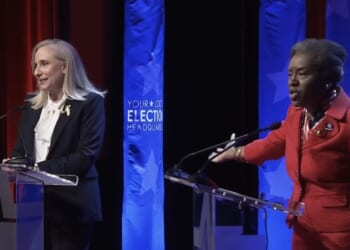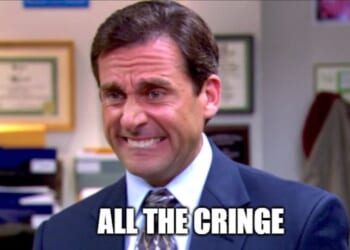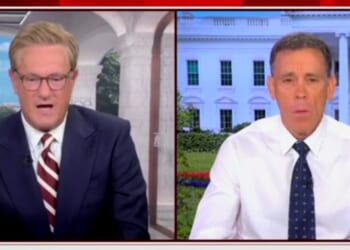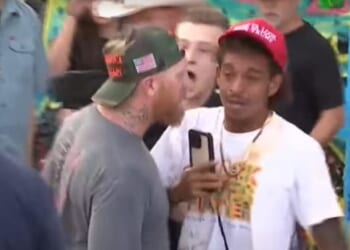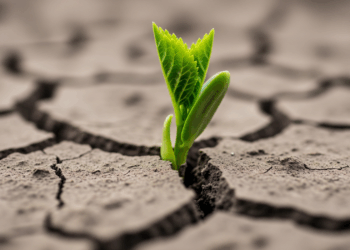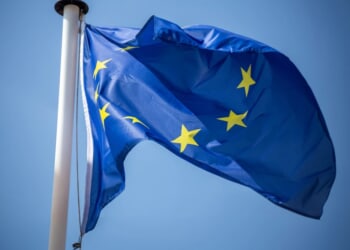In one of his Spectator A.M. letters this week, our Dan Flynn noted that Taylor Swift occupies eight of the top ten slots on the current Billboard Hot 100. That’s astounding.
I was certainly struck by that. Not because I’m struck by Taylor Swift. I’m not a Tay Tay boy. I suppose that’s more the role of so-called “soy boys,” or the special role of Tay Tay’s boy, Travis Kelce, a.k.a. “Mr. Swift” — or as the most excellent Aaron Rodgers has dubbed him, “Mr. Pfizer.” Nothing against Ms. Swift, but her tunes just aren’t my thing, and neither are her politics. Now if Ms. Sydney Sweeney starts singing, I might become a fan boy. I’m a fan of her politics as well as her genes. Though I will not be buying her used bath soap. In fact, as a loyal husband, father of three daughters, 58-year-old man, and good Catholic boy, I attempt to avert my eyes from her jeans videos, avoiding a trip to the confessional.
But I digress! I was speaking of Swift before being distracted by Sweeney. And my primary focus in this column is not Tay Tay’s tunes but pop music — today and back in the day.
In my humble opinion, the heyday for the Billboard music charts was the late 1970s and early 1980s, captured uniquely by the iconic “American Top 40” broadcasts delivered on thousands of stations coast to coast by the legendary Casey Kasem. Thanks to Sirius XM’s 1970s station (plus iHeartRadio), I listen to these re-broadcasts while on the road during long drives. They keep me awake. Even when I (frequently) don’t like the song at hand, I’m occupied by the nostalgic trip down memory lane. The old shows have become history to me as much as music.
But what always strikes me when listening is the stark contrast between pop music then and now, evident in their respective top 40/100 charts. In the late 1970s, a singer would not have had eight of the top 10 records. No one dominated like that. As to how Taylor Swift today could be so dominant, Dan Flynn rightly notes: “The chart’s formula differs dramatically, for better and worse, from when it started 67 years ago. Digital buys and streaming, rather than the heavy emphasis on singles sales and radio airplay, now heavily influence placement. This formula allows for album tracks to invade the charts.”
And many if not most of these songs need not be particularly good or memorable. Dan adds: “Dating back decades prior to the start of my life, I can hum or sing one, a few, or all of the songs in any given top ten. More than five decades after my birth, I cannot hum a one. Popular music is not as popular as it once was.”
Indeed, it is not. My theory, admittedly not based on scientific analysis, is that the competition for the likes of Swift today is nowhere near what it was at the height of pop music in the latter 1970s. If you’re a fan of that era, try this experiment: When you hear a big song from that period, Google it to see whether it hit No. 1. Oftentimes, it did not. Why? Because it was squeezed out by so many competitors.
I could give many examples. Sticking I suppose to pretty blondes (an unintentional motif here today), consider my favorite: Olivia Newton-John. A bunch of her songs that you probably figured hit No. 1 surprisingly did not. It wasn’t that they weren’t good enough or liked enough or sold enough copies. They were simply blocked by a plethora of other wildly popular tunes. That includes some of her best from the brilliant Grease soundtrack, including “Hopelessly Devoted to You.”
As another example (shifting from blondes, I guess), the beautiful Crystal Gayle had a smash hit with “Don’t It Make My Brown Eyes Blue.” Would you believe that song never made No. 1? How? Because Debby Boone’s “You Light Up My Life” occupied the top spot for 10 weeks in 1977.
And if Debby Boone was not keeping an artist from No. 1, it might be a group like the Bee Gees, which had over a half dozen No. 1 songs in the latter 1970s, or another favorite of mine (not blonde), Donna Summers, who had four No. 1 songs in 1978–79. (Summers, incidentally, was a conservative Christian Republican and Reagan supporter.) The other day, I caught Jefferson Starship’s “Miracles.” Terrific melody. I wondered how many weeks it was at No. 1. I looked it up. The answer: zero. It never got higher than No. 3.
One would think that many of these ’70s tunes would be an easy No. 1 today, given the sheer lack of rivals.
Again, I have no hard data on this, but I’m guessing that the era of steepest competition must have been the late 1970s. Though I’m actually more of an ’80s kid (Butler High School class of ’84), I don’t enjoy the American Top 40 re-broadcasts from the late 1980s. The music wasn’t as good. Frequently, I’ll catch the top five from a certain week in, say, 1988, and shriek at my radio, “I hated these songs! These songs suck!” (That’s how we Butler dudes talked.) They didn’t face the crowded field occupied by the diddys of the ”70s.
Either way, in those days, pop music was more popular. Young people might think that older guys like myself are merely uninformed about today’s music. But I would tell them that you had to live through my era to appreciate the perspective. Pop music pervaded everything, from your car to boombox, transistor radio, the portable cassette and eight-track players you toted around to the park or beach, or wherever. Teens flooded record stores in malls and bought albums and 45s. Every kid had a stereo and record player. Pop groups and soloists like The Osmonds, Jackson 5, The Carpenters, Tony Orlando & Dawn, Sonny & Cher, Andy Gibb, and John Denver had their own TV shows or specials (many were corny, but also refreshingly innocent).
The pop music environment today is not as saturated. Youth have many more options for entertainment, especially via video. And frankly, it’s surely a good thing that pop music no longer has the same influence. Much of that music and its messages were gobbledygook. Many love songs were sappy and silly, so much so that Paul McCartney wrote one of the best songs of the decade under the title, “Silly Love Songs.” Much of it was twaddle. You hummed and tapped your toes, but the lyrics were stupid.
But that aside, pop music is not as popular as it once was.

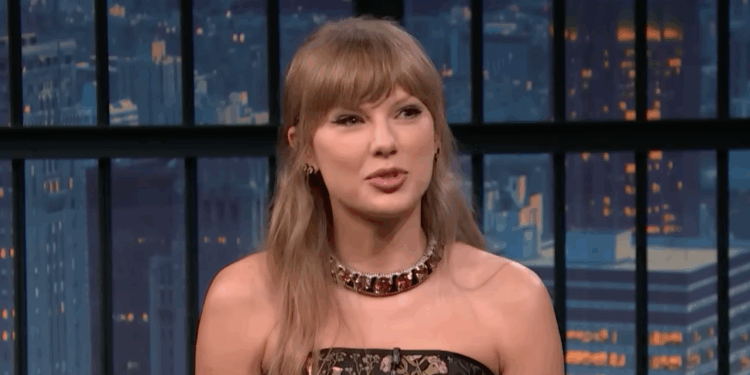
![Scott Bessent Explains The Big Picture Everyone is Missing During the Shutdown [WATCH]](https://www.right2024.com/wp-content/uploads/2025/11/Scott-Bessent-Explains-The-Big-Picture-Everyone-is-Missing-During-350x250.jpg)


